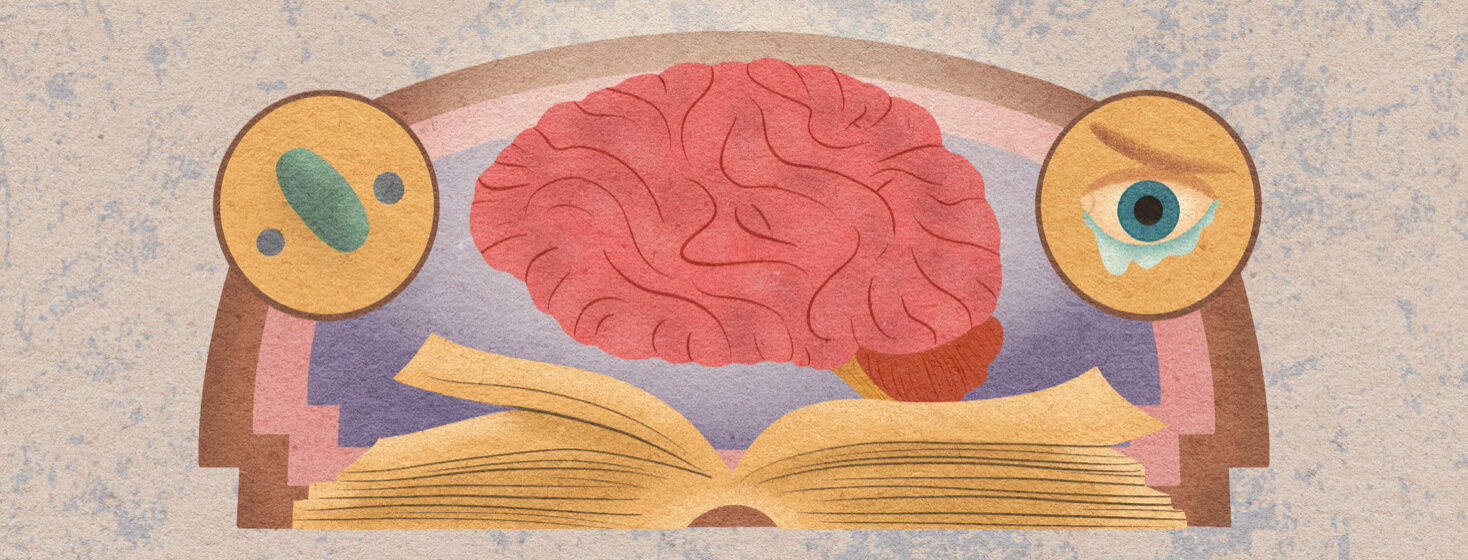In the Book of Chronic Migraine, Do All Roads Lead to Attacks?
For many, chronic migraine means living with constant pain of varying gradations. While navigating a world full of triggers, this can quickly exacerbate that pain into a full-blown attack. We can feel as if we're living in a Choose Your Own Adventure Book where any option we take will lead to an attack. Are there any ways to change an ending that seems inevitable?
Let's walk through the average day of a person living with chronic migraine:
Chapter One: I'm okay...ish
If the pain isn't sidelining, proceed with the day. Perhaps this includes eating, walking, running errands, doing chores, or working. However, when we exert ourselves energetically, emotionally, intellectually, or physically, it often doesn't take much to tip the scales from low pain into eye-watering distracting pain. If the pain worsens, proceed to Chapter Two. If minimal pain continues, proceed to Chapter 1.5.
Chapter Two: Things are getting worse...
As most of us know, treating migraine symptoms before they escalate into a full-blown attack gives us the best chance of stopping things in their tracks. So our next step: cancel plans and clear the decks. Take rescue medication. Hydrate as much as nausea will allow. Be quiet while waiting for the intensity of symptoms to lift. If the pain lifts, go back to Chapter One. If pain persists, proceed to Chapter Three.
Chapter Three: It's official...I've been hit
Most people who live with chronic migraine have an arsenal of rescue medications to take as pain and other symptoms escalate from bad to worse. If we're lucky, we have a partnership with a good migraine specialist and have developed a protocol that keeps us out of the emergency room. Next step: proceed to the next line of rescue medications. Unfortunately, in many cases, that next line of medications often comes with complicated side effects such as drowsiness or nausea. For others, we take more of the same rescue medications we tried in Chapter Two.
I should point out that for most of us, rescue medications are taken for acute symptoms. We take these in addition to daily or monthly preventatives. The challenge that comes with living with chronic migraine is that we frequently cycle from Chapters One to Three. And in doing so, we encounter medication limits meant to keep us from experiencing overuse headache and/or to keep us safe from liver damage or other health challenges. A hard reality for many of us.
If the pain improves, go back to Chapter One. If pain persists, proceed to Chapter Four.
Chapter Four: The scary unresponsive attack
When we have tried everything and pain persists or escalates, we are eventually forced to stop in our tracks and give the attack our full attention. It is the pull-the-shades, ice pack on the neck/head, equivalent of going into labor-migraine time. It's intense and demands everything we have. This level of pain and onslaught of neurological symptoms can sometimes be scary to experience, and sometimes we just have to wait it out. None of us want our daily books on chronic migraine to end here, but so often, they do.
Chapter 1.5: Do less when pain is manageable?
The chapter not mentioned in the flow of things - perhaps an alternative chapter that exists for all of us living with chronic migraine has to do with pacing. It is a very hard one for many of us to employ. Life with chronic pain means frequent canceling of plans. It means our productivity and ability to stay on top of things slips. We fall behind easily. So, when we experience a well-moment, we leap into fast-forward mode to catch up and get organized. Being surrounded by disorder is difficult for many who live with migraine. So, off we go in our well-moments to re-establish the order and control we've lost while ill.
Sometimes, in an effort to catch up with tasks (work, home, whatever the case), we overdo. And in so doing, if we have underlying pain present, we may send ourselves spinning back into an attack. So Chapter 1.5 is about slowing ourselves down if and when we experience low to minimal pain. Perhaps we might try to challenge ourselves to do less in those moments. Would it be the craziest thing to rest instead of using that time to rush to catch up? Perhaps doing so would lessen the likelihood of exacerbating an attack. It may even help us restore our empty reserves.
Does the symbol of the Choose your Own Adventure story resonate with your migraine life? Please share with us the cycles you go through and how you navigate them so that we can learn from you.

Join the conversation